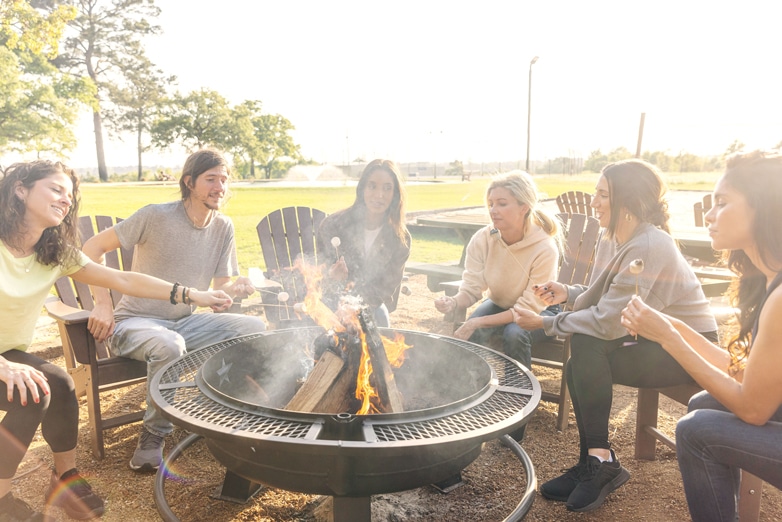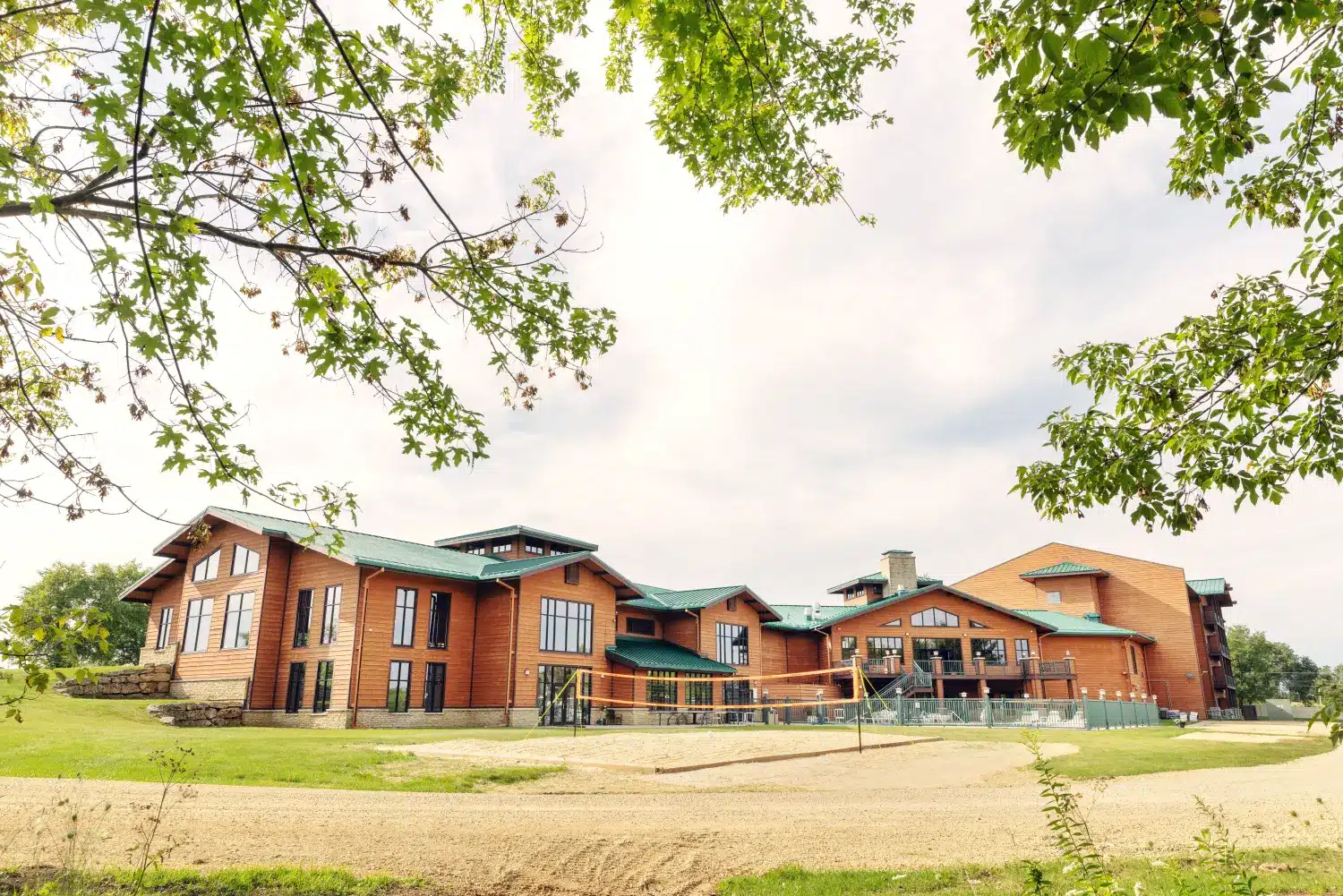Substance use disorder recovery is a journey people must make on their own, but you can help if you don’t enable the abuse or disparage the process.
One of the hardest things to do is stand by while a loved one struggles with alcohol or drug addiction. To try to help them without enabling them may be even harder. Even if they are your children or younger siblings, there’s a limit to how much you can control vs. influence their behavior.
How to help an addicted mother or father, brother or sister, husband or wife, is to persuade them to seek substance use disorder rehab, inpatient or out.
Substance Use Disorder Symptoms
First, you need to realize there is a problem. You can’t resolve a problem you don’t know exists. There are different signs and symptoms for alcohol abuse and different types of drug abuse, and they can be mistaken for other life changes or mental health issues.
Some of the most common symptoms are:
- Disinterest or poor performance in school or work
- Lack of energy
- Weight loss or gain
- Poor grooming or dress
- Changes in behavior or mood
- Financial problems
- Red eyes or constricted or dilated pupils
- Lack of coordination
- Mood changes
- Confusion
- Runny nose
- Needle marks
While these aren’t proof positive that your loved one is abusing drugs or alcohol, they might corroborate other evidence or warrant further investigation.
As much as you might want to have complete control over your loved ones when they are doing something dangerous or ill-advised, no one in a healthy relationship has that much control or would want it, usually. (Their addiction may have that much control, at least at times.)
What you can hope to have is influence when you’re trying to determine how to help an addicted husband, wife, or other loved one.
The difference between control vs. influence is that control is absolute power, while influence is persuasion. To influence people is to be able to guide or persuade them, in this case, to seek or accept help.
Influence can be one-on-one or a group. One example of group influence is an intervention. Talk to a Intake Coordinator
Take The First Step Towards Recovery
What Is an Intervention?
Individuals with an alcohol or drug use disorder don’t always know that it has become a problem or that others have noticed it. An intervention is a coordinated group effort—you, other friends and family, and a counselor or therapist—to persuade your loved one that they have a problem that needs solving.
First, gather together everyone who has an interest in the substance-abusing loved ones to plan the intervention with the assistance of a counselor, social worker, or therapist. Then find out how bad the loved ones’ substance use disorder is, what treatments are available, and make preliminary arrangements to enroll them in it. Then decide who will attend the intervention. It should not include anyone your loved ones hate or who hates them, who has their own uncontrolled substance use or mental health problems, or who won’t stick to the plan or might otherwise sabotage the intervention process.Next, each member of the intervention party should write a statement listing specific instances in which the loved ones’ behavior due to substance use disorder has personally harmed them or their relationships with them.
You all must also decide on what you will do if the loved ones reject the plan and do nothing about their substance use disorder. The actions should be significant, realistic, and as specific as possible: loss of financial support and lodgings; dismissal from their job; no further contact with any underage family members. Finally, the loved ones must be brought to the intervention, if possible when they are not under the influence of alcohol or drugs, and without knowing the reason.
There are three main parts to the intervention:
- Each member of the intervention party reads their prepared statement.
- A spokesperson for the group describes a treatment plan that the group created with professional assistance that they want the loved ones to follow. They can make arrangements that allow the person to leave the intervention and go to rehab directly from there.
- If the loved ones refuse rehab, explain the consequences and mean them. Group members can stress that they will enforce them.
Ending Codependency
If you are not careful, your assistance may become enabling. If you give a person who is addicted to drugs or alcohol a place to stay, food to eat, and ask nothing of them, you allow them to free up time and money for further drug use. You make it possible for them to continue their drug-using lifestyle.
When your self-worth is tied to helping someone else, as they are dependent upon your help, yours is a codependent relationship. This is not a healthy relationship and is not likely to lead to the desired outcome, i.e. an end to your loved ones’ substance use disorder.
The Treatment Process
The first step towards recovery is getting the individual with a substance use disorder (SUD) to admit they have a problem and to want, agree, or concede to going through rehab for substance use disorder.
People disagree as to whether reluctant or forced rehab is as effective—or at all effective—as voluntary rehab. One popular view is that you cannot recover until you hit rock bottom, until you have reached the point where you know you are going to die unless you get help.
There are many problems with that view, including the fact that some people age out of addiction. Addiction is more often a problem of the young. Many grow out of it without any special rehab treatment. Others arguably hit bottom repeatedly until they seek recovery or don’t.
So, don’t wait for people to hit bottom. If you have influence, get your loved ones into rehab sooner rather than later. Find a treatment center.
The next step is at the intake when the admissions staff determines what type of help your loved ones need. Part of this is checking for a co-occurring mental health disorder, such as bipolar disorder, borderline personality, depression, stress, trauma, or other condition. This is also known as a dual diagnosis.
Treatment for dual diagnosis requires that both conditions are addressed. One may have caused the other, so neither may go away unless both are treated.
With severe addictions, sometimes medically monitored withdrawal is also necessary. To abruptly stop some addictions, particularly alcohol and benzodiazepines (benzos), can be hazardous to the health, even fatal.
Slow withdrawal with reduced doses of a substance or safer replacement medications (known as medication-assisted treatment or MAT) can make the process safer and more likely to lead to recovery.
Once the individual’s withdrawal symptoms are under control, behavioral therapy can begin, supplemented with exercise, medication, support groups, and other assistance options. Relapse doesn’t necessarily mean failure. It is almost a part of the recovery process. Statistics show that approximately one out of two people—between 40% and 60%—relapse during their first year of recovery. Others have a temporary lapse, a one-time return to use. So if your loved ones do begin drinking or using again, your first thought should not be to give up on them. Addiction is a disease—not a virus or a bacteria, but a rewiring of the brain’s reward system that is probably at least partially due to a genetic disposition. It is not meant as a personal affront. Instead of the blame game, consider how or if you can help them get back on track. Here are some dos and don’ts. Shame or guilt is only useful if it discourages future bad behavior. Dwelling on excessive shame or guilt for a relapse may instead discourage individuals with addictions from acknowledging a relapse or trying to recover again. So: As much as you might want to, don’t blame yourself. You cannot recover for your loved ones, and you can’t make them recover or want to recover. You can only try to ease the way, to facilitate the process.
In the Event of a Relapse
Dos
Don’ts
Take Care of Yourself
Despite the prevalence of seven-day, 30-day, 60-day, or 90-day stays in rehab, the process of recovery takes much longer. It never ends. After decades of sobriety, a full relapse is possible. All you or a recovering person can do is take it one day at a time.
Just as you shouldn’t blame the individual with addiction if they relapse, you shouldn’t blame yourself. You can only influence, not control their actions. You are not their therapists. You can listen, you can suggest, but you cannot make them do anything.
If their addiction is too much of a problem for you, if it is threatening your sense of well-being, you must take care of yourself. While you can’t force your loved ones into therapy, you can go to therapy. While you can’t force them to attend support group meetings, such as Alcoholics Anonymous or Narcotics Anonymous, you can go to Al-Anon or Nar-Anon meetings for the families of substance use disorderrs.
In the end, for your own survival, you may have to cut your loved ones loose to recover or not on their own. If they can’t or won’t save themselves, you can at least save yourself.
For more information, go to the National Institute on Drug Abuse’s Step by Step Guides to Finding Treatment for Drug Use Disorders. Assistance is available for people struggling with addiction and the people who love them.
Sources
- mayoclinic.org – Drug addiction (substance use disorder)
- mayoclinic.org – Intervention: Help a loved one overcome addiction
- health.usnews.com – Why Do Alcoholics and Addicts Relapse So Often?ac
- self.com – 3 Things Not to Say When a Loved One With Addiction Relapses—and 6 to Try Instead.
- drugabuse.gov – Addiction Science
- urmc.rochester.edu – Helping a Friend with an Addiction
- health.usnews.com – Analyzing Philip Seymour Hoffman
- drugabuse.gov – Step by Step Guides to Finding Treatment for Drug Use Disorders
Medical disclaimer:
Sunshine Behavioral Health strives to help people who are facing substance abuse, addiction, mental health disorders, or a combination of these conditions. It does this by providing compassionate care and evidence-based content that addresses health, treatment, and recovery.
Licensed medical professionals review material we publish on our site. The material is not a substitute for qualified medical diagnoses, treatment, or advice. It should not be used to replace the suggestions of your personal physician or other health care professionals.







